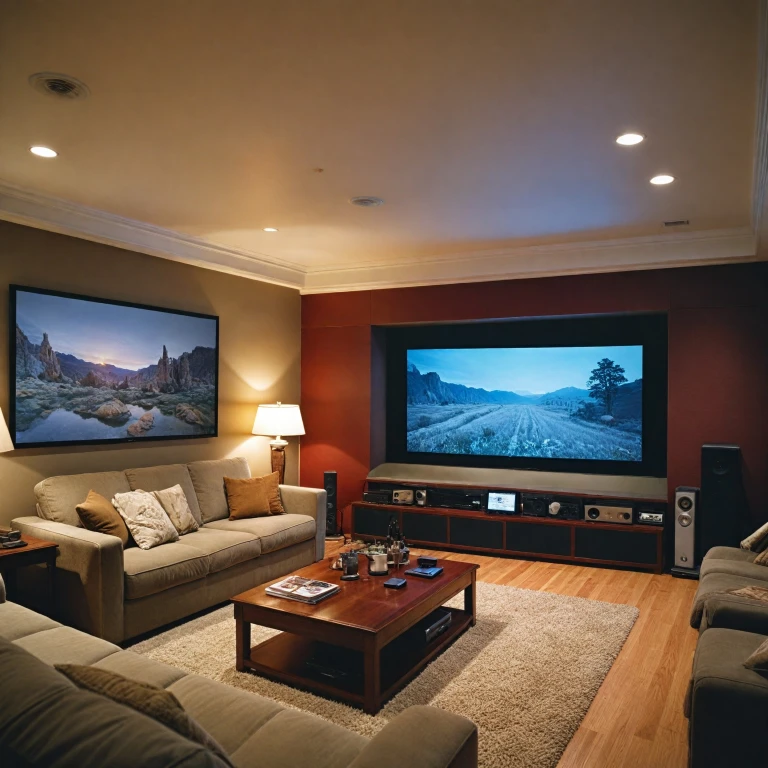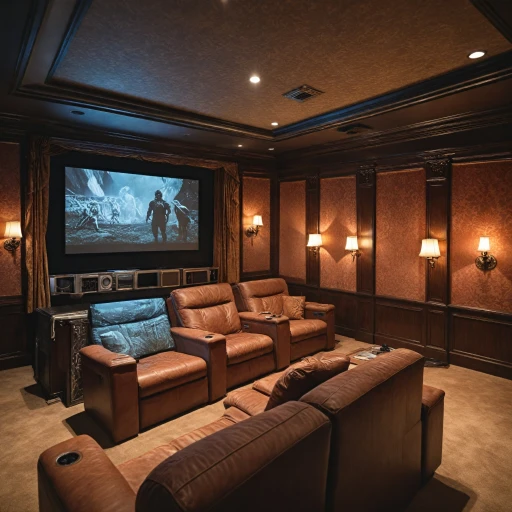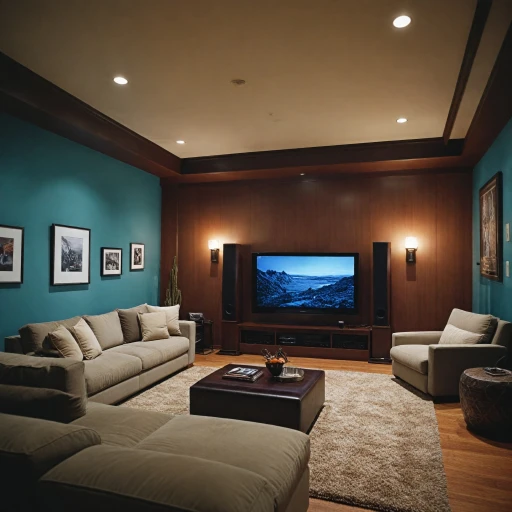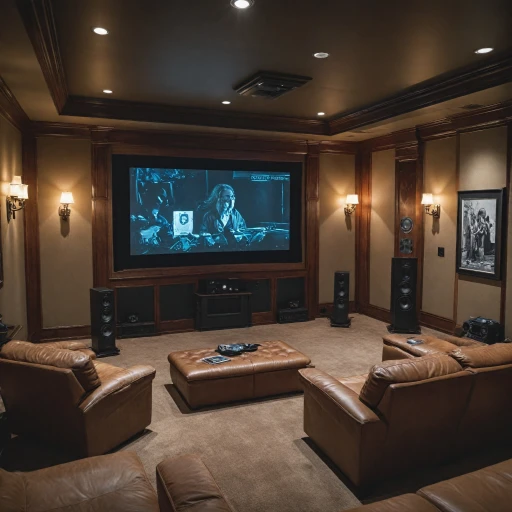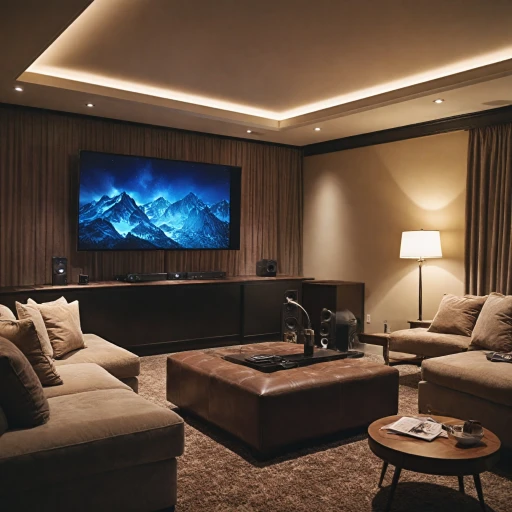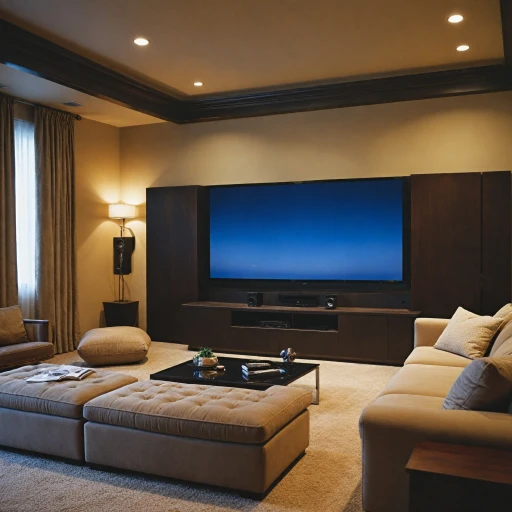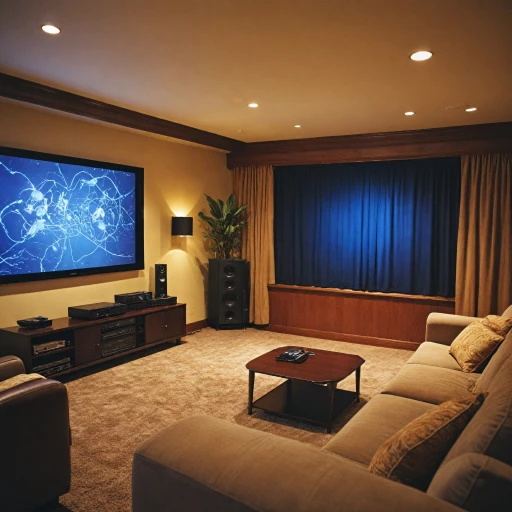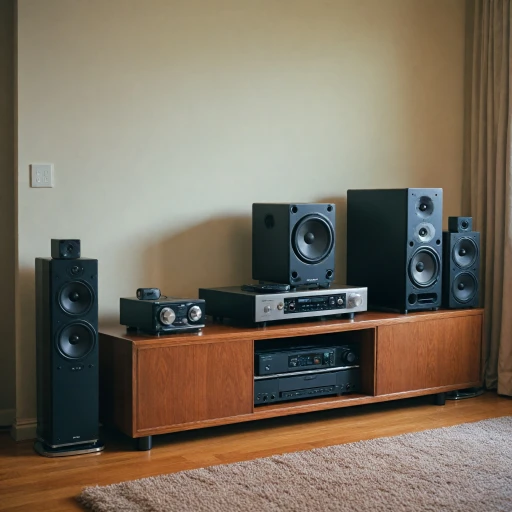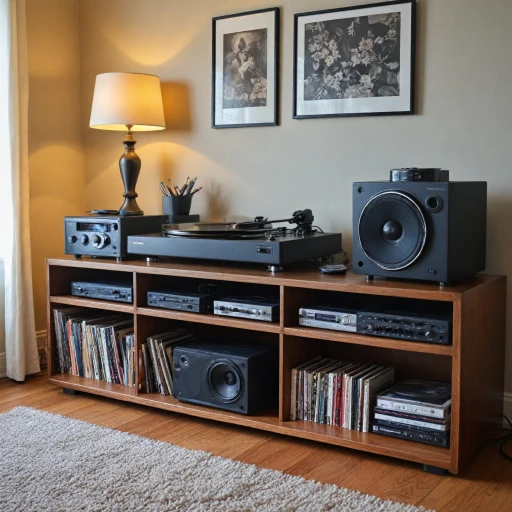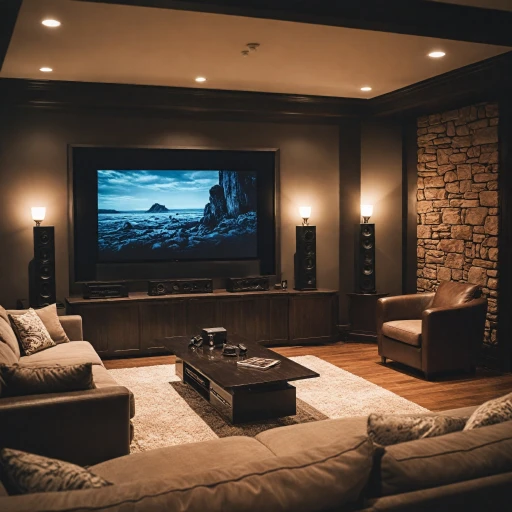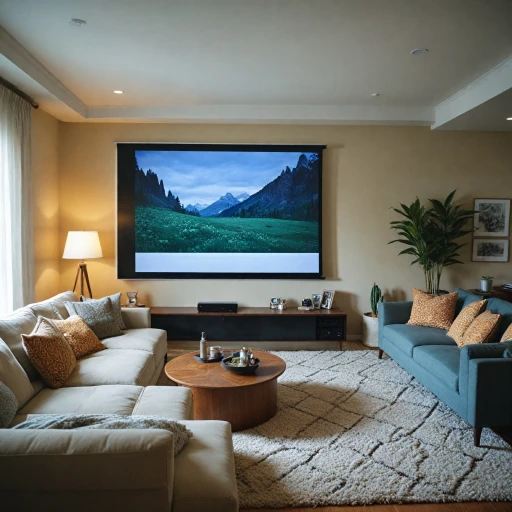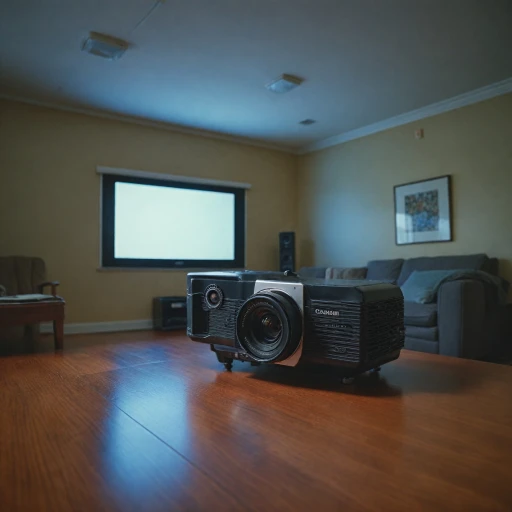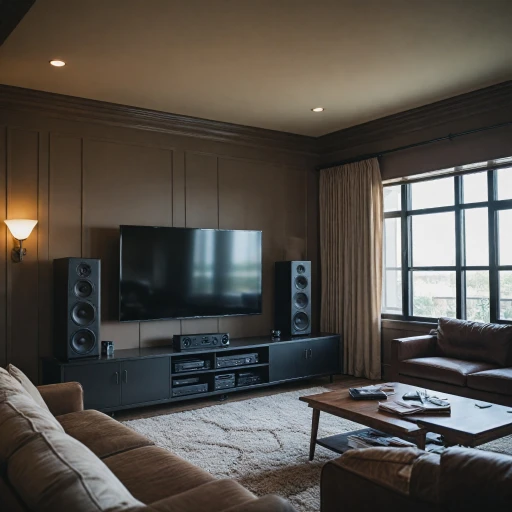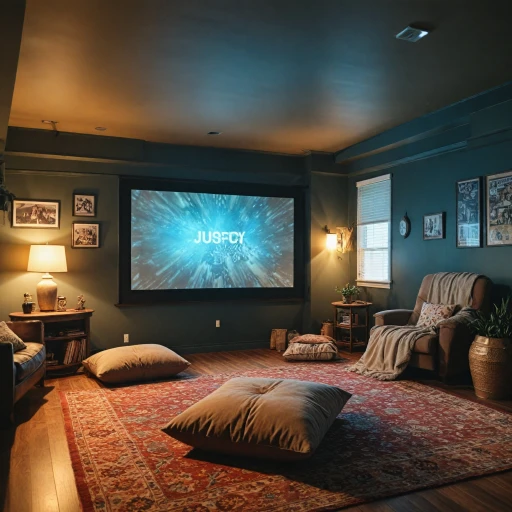
What is an Audio Crossover?
Unveiling the Audio Crossover: A Key Component
When diving into the intricacies of home theater systems, understanding the role and function of an audio crossover is crucial. At its core, an audio crossover is an essential filter that determines how sound frequencies are distributed among the different components of your audio setup. It acts as a traffic officer, directing specific frequencies to their respective speaker drivers.
Imagine orchestrating music where each instrument is assigned a precise part to avoid discordance. Similarly, in a home theater setup, crossover networks divide the audio signal into high, mid range, and low frequencies, sending each to the appropriate loudspeaker drivers—tweeters, mid-range drivers, and subwoofers, respectively. This segmentation allows each driver to efficiently handle the part of the frequency spectrum it is designed for, resulting in a more accurate and engaging sound experience.
There are two primary forms of crossovers—passive and active. Passive crossovers are external devices that rely on the existing power source from the amplifier and filter the frequencies without additional power. These are often directly connected to speakers, using a combination of inductors and capacitors to split the audio signal into low pass and high pass filters. On the other hand, active crossovers require an external power source and offer more flexibility in terms of adjusting the crossover frequency and other parameters to match the acoustics of your room.
Choosing the right crossover for your sound system requires paying attention to the frequency response and design of your speakers, as well as understanding the crossover networks they employ. Whether dealing with a single speaker crossover or more complex crossover networks, the goal is to optimize each speaker's performance and achieve a seamless sound across all frequency ranges. This baseline knowledge lays the foundation for exploring the broader importance of audio crossovers in enhancing your home theater experience.
Importance of Audio Crossovers in Home Theater Systems
The Significance of Audio Crossovers in Home Theater Systems
Audio crossovers play a crucial role in home theater systems by ensuring that each speaker receives the appropriate frequencies, enhancing overall sound quality. At the heart of this system is the crossover network, which divides the audio signal into different frequency bands. This division allows each loudspeaker driver to handle the frequencies it is best suited for, whether they are low, mid-range, or high frequencies.
By using a crossover, you can ensure that your tweeter focuses on high frequencies while your subwoofer handles the low frequencies. This separation minimizes distortion and maximizes the efficiency of your speakers. The crossover point is where the signal is divided, and it is essential to set this correctly to maintain a balanced frequency response.
There are two main types of crossovers: passive and active. Passive crossovers are built into the speaker and do not require an external power source, making them a common choice for many home theater setups. However, active crossovers, which require a power amplifier, offer more precise control over frequency response and are often used in more advanced systems.
When integrating audio crossovers with home theater projectors, it is important to consider the design and power handling of your speakers. A well-designed crossover network will ensure that each speaker operates efficiently within its designated frequency range, delivering clear and powerful sound.
For those looking to enhance their home theater experience, investing in a quality speaker crossover can significantly improve sound clarity and depth. Additionally, using a center speaker stand can further optimize audio performance by ensuring proper speaker placement.
Types of Audio Crossovers
Exploring Different Crossover Types for Optimal Sound
When it comes to achieving precise sound distribution across your audio system, understanding the different types of crossovers is key. These ingenious devices play a crucial role in directing frequencies to the appropriate loudspeaker drivers, improving frequency response and enhancing your overall audio experience. Whether you're operating high watt speakers or delving into the subtleties of low frequencies, knowing which type of crossover to use will make a significant difference. Crossovers come in two main varieties: passive and active. Each has its own design and attributes, making them suitable for different setups.- Passive Crossovers: These are entirely reliant on the power coming from an amplifier. They utilize components like capacitors and inductors to passively filter frequencies before delivering them to the speakers. This means they can split audio signals without additional power, making them an economical choice and straightforward to integrate into a speaker system. However, tweaking the crossover point for optimal frequency distribution may require some effort since adjustments must often be made to the physical components themselves.
- Active Crossovers: Unlike their passive counterparts, active crossovers require their own power source. These are often integrated into modern home theater systems, where fine-tuning is essential. An active crossover can divide frequencies before the audio signal reaches the power amplifier, providing more control over the crossover frequency for high precision sound distribution. This ability ensures low frequencies are sent to subwoofers while higher frequencies reach tweeters, all with lower distortion and enhanced sound clarity.
Integrating Audio Crossovers with Home Theater Projectors
Seamlessly Pairing Audio Crossovers with Visuals
Integrating audio crossovers within a home theater projector setup is as much about the art of design as it is about the science of sound. Correctly aligning your audio components ensures an exceptional auditory experience that complements your high-definition visuals. To achieve this, consider the roles of passive and active crossovers. Passive crossovers, often found in speaker designs, use passive networks to split the audio signal into separate frequency bands before delivering it to tweeters, mid-range drivers, and subwoofers. These passive crossovers operate without an external power source, handling low-frequency and high-frequency signals adeptly with second-order low pass and high pass filters. Active crossovers, on the other hand, require a power amplifier and constantly manage the frequencies to ensure the best response. They provide the flexibility to set precise crossover points and crossover frequency adjustments, allowing for better control over each speaker’s frequency response. This type of crossover is valuable in enhanced systems where loudspeaker drivers demand more intricate sound separation and the audio design needs distinct control over power distribution, measured in watts. When aiming for the perfect sound and picture harmony, establishing a clearly defined crossover network is critical. The connection between projectors and sound systems must account for the individual frequency capabilities of each speaker. By meticulously setting crossover frequencies, you ensure optimal performance, whether driving high frequencies through tweeters or directing low frequencies to your subwoofers. Effective sound integration involves more than just a speaker crossover. Fine-tuning crossovers enhances your home theater's audio fidelity, providing a balanced soundscape that matches the clarity and color depth your projector offers. Facing challenges with integration? Addressing typical frequency response mismatches or volume disparities can usually be resolved by revisiting your crossover design, ensuring the audio aligns seamlessly with your on-screen action.Common Challenges and Solutions
Navigating Audio Crossover Integration Challenges
Integrating audio crossovers within your home theater projector setup can sometimes present challenges, even for the most seasoned audio enthusiasts. While audio crossovers play a significant role in controlling the frequency response and optimizing sound quality, certain issues may arise during the integration process.Mismatch of Frequencies
One common obstacle is the mismatch of frequencies. If the crossover frequencies do not align properly with the loudspeaker drivers, it can lead to a distorted sound experience. To avoid this, ensure that the crossover network’s high pass and low pass filters are set accurately to match the capabilities of the drivers, including the tweeter and subwoofer.Power Amplifier Compatibility
Power amplifier compatibility is another factor to consider. Incompatibilities could result in underperformance or even damage to the speakers. Choose a crossover that can handle the amplifier’s wattage output. This ensures the speaker's crossover seamlessly manages the power without compromising the audio quality.Configuration of Crossover Types
Choosing between passive and active crossovers is crucial. Passive crossovers, which are simpler in design, may not offer the flexibility needed for detailed adjustments in frequency response. Active crossovers, while more complex and often requiring additional power, allow for precise control over crossover points.Driver and Speaker Arrangement
The arrangement of drivers, whether mid-range or tweeter loudspeakers, affects how crossovers influence sound distribution. Ensuring that the speaker setup accommodates the crossover’s design specifications will enhance sound clarity. When facing these challenges, it’s essential to remember that proper tweaking of crossover points and understanding how high and low frequencies interact in the system can optimize the overall audio response, delivering a richer, more immersive sound experience for your home theater.Tips for Choosing the Right Audio Crossover
Guidelines for Selecting an Audio Crossover
When it comes to enhancing your home theater experience, choosing the right audio crossover is crucial. The crossover is the unseen hero that ensures your audio system delivers the best possible sound quality. To ensure you make an informed decision, consider the following tips:
- Understand Your System's Power Requirements: The crossover should be compatible with the power amplifier and loudspeaker drivers you are using. Check that the crossover can handle the system's wattage without compromising the sound.
- Identify Your Frequency Range Needs: Determine the frequency response required by your setup. Will you need a low pass filter for your subwoofer, a high pass for your tweeter, or perhaps a more complex crossover network that handles both high and low frequencies?
- Decide Between Passive and Active Crossovers: Passive crossovers are simpler and more cost-effective, connecting directly to your speaker cables. They don't require additional power but are less flexible in terms of adjusting the crossover point. Active crossovers, on the other hand, offer precise control over the frequency response and are best for fine-tuning your sound, albeit at a higher regular price.
- Consider the Design of Your Speaker System: Matching the crossover to your speakers' design is essential. If you have mid-range speakers, ensure the crossover supports smooth frequency allocation to prevent a "gap" in sound.
- Choose Based on Driver Configuration: Depending on the driver setup (such as second order loudspeaker drivers), select a crossover that optimally routes low and high frequencies. For instance, a multiple-way speaker system might benefit from a sophisticated crossover network.
- Explore Manufacturing Brands: Research reputable brands known for quality crossover designs. Your choice could impact the longevity and reliability of your home theater audio system.
With these considerations in mind, you'll be well on your way to finding an audio crossover that complements and elevates your home theater system, providing a superior audio experience tailored to your specific needs.
